I Bought an Ostrich Egg, and Here’s What I Made With It
First step: Grab a hammer.
THIS ARTICLE IS ADAPTED FROM THE NOVEMBER 18, 2023, EDITION OF GASTRO OBSCURA’S FAVORITE THINGS NEWSLETTER. YOU CAN SIGN UP HERE.
In 1886, a researcher at Yale’s Peabody Museum was cutting into an ostrich egg when it violently exploded. A build-up of gasses inside the egg shattered the shell, raking his face with shrapnel and sending everyone else in the room running from the fumes.
The incident was on my mind this week, as I prepared myself to crack open an ostrich egg of my own. I was intimidated by both the egg’s size—imagine a toddler’s head—and the ceramic-hard surface, dotted with large, deep pores.
How did I acquire said egg? I’m not one to make impulse purchases, but when I saw one sitting in a clear cabinet at Ostrichland USA, I felt compelled to buy it.
The main draw of Ostrichland USA, a roadside attraction/farm in Solvang, California, is the opportunity to feed these massive birds. I forked over the $7 and walked out back, where hundreds of birds roamed behind fences. Most stood seven feet tall or more. Each of their fluffy black-and-white wings was as large as an unfurled umbrella, and their enormous scaled feet kicked up clouds of fine dust as they stampeded over, vying to peck food out of the long-handled tray I held. “Yes, we like to bite,” a sign cautioned.
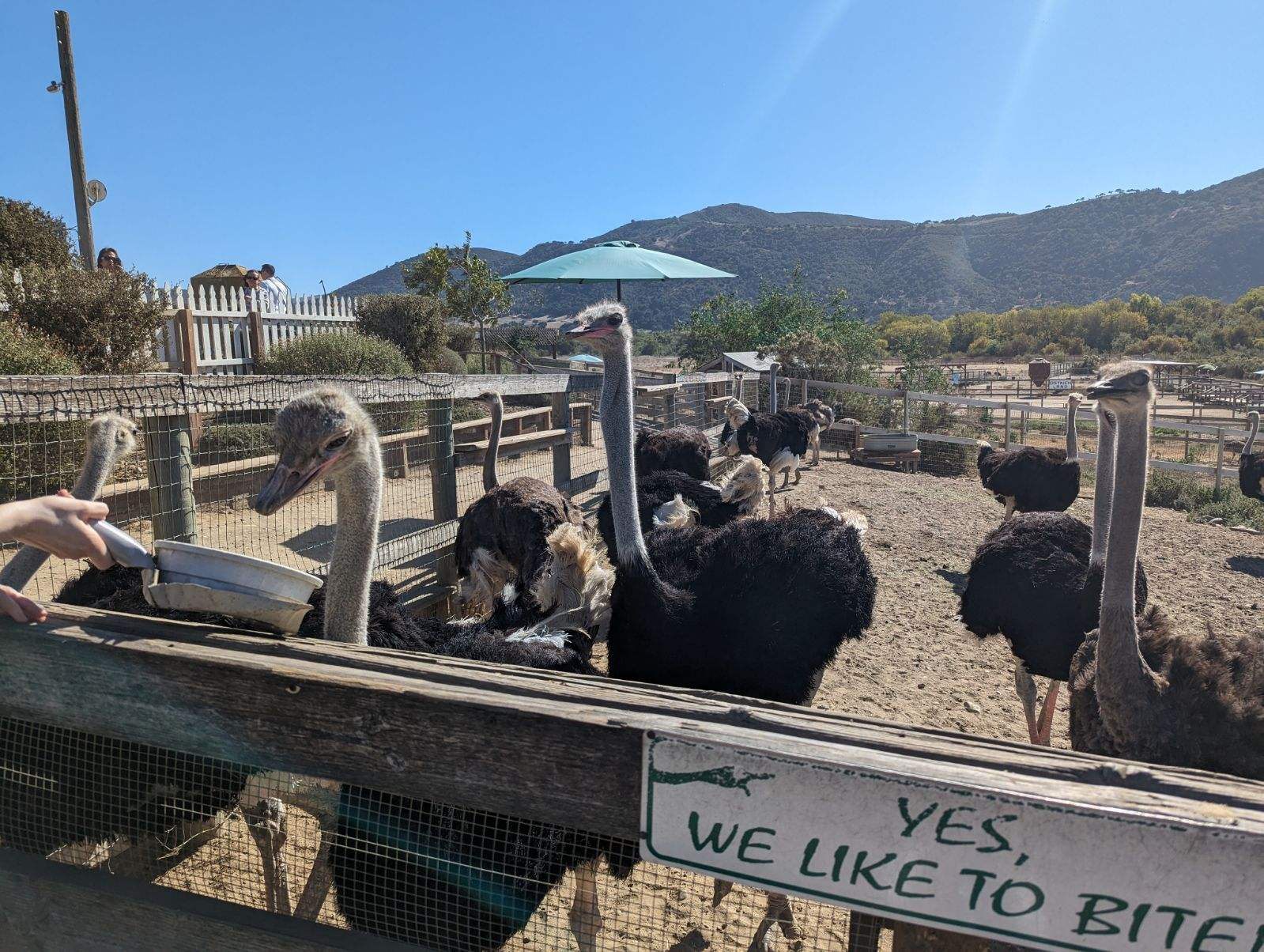
Perhaps I was a little adrenaline-drunk or sun-dazzled when I went back into the gift shop and bought the egg—the last one available that day, as the cashier told me. I gleefully watched her pack it up into a cardboard box with a sheet of cooking instructions and went back to the car to carefully stow it away under a seat.
After I got home, unpacked my treasure, and took a dozen photos, reality set in. I’m not a huge fan of eggs. Something about their texture and slightly sulfuric smell sets me on edge. And looking online, I read that a single ostrich egg can contain the liquid equivalent to 24 chicken eggs. But I was determined to use every bit, and to save the hard, deep-pored shell as a keepsake.
Thankfully, my friend Tam had also once bought an ostrich egg from a farm before and offered to help open it. “I’ll bring my tools,” they ominously texted.
Ostrich on the Range
There’s a long history of ostrich-farming in the United States. Throughout the 20th century, ostrich had been touted as “the new red meat,” leading to ranches popping up, usually in arid areas that mimicked the bird’s natural habitat. The ostrich’s territory spans the deserts and savannahs of the African continent, and once, there was even a species of ostrich native to the Arabian Peninsula, though humans hunted them to extinction in the 1900s.
The American public has never totally embraced the ostrich steak or burger, and, stateside, the industry has stayed small, with several operating as tourist attractions. (Ostrichland doesn’t sell ostrich meat from its birds, but will sell eggs at $60 each.)
Ostrich meat is lean and greatly resembles beef, which is probably why humans had the guts to transport these large birds across the world despite their terrifying size. Ostriches made it surprisingly far past their stomping ground in the ancient world, with Romans relishing ostrich brains and letting them loose in the Colosseum for sport.
But ostrich eggs are the real historical marvel. In South Africa, archeologists have found carved, decorated ostrich-egg fragments that are 60,000 years old. Shells have also been found in Egyptian royal tombs and Bronze Age shipwrecks. While their shells were valued for their durability and beauty, their insides were also savored. Cooking ostrich eggs was a snap for ancient nomads: Simply crack a hole in the top, set the egg in some coals, and stir the inside with a stick.
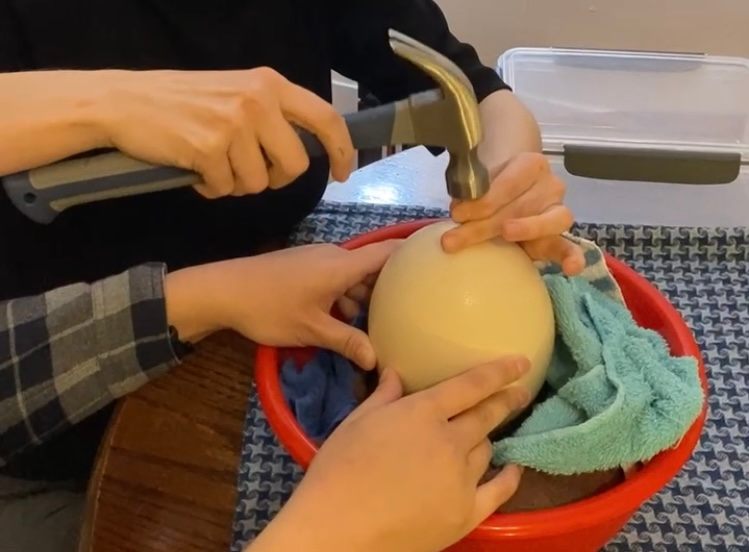
Ostriches are the planet’s largest birds, and their eggs are the largest as well. Their superlative size and familiar flavor made them a fascination for Europeans and Americans, who acquired them for novelty and research. Alexandre Dumas (of The Three Musketeers fame) included a recipe for an ostrich-egg omelet in his 1873 cookbook, where he suggested cooking the egg with lots of onion, sweet pepper, and tomato.
Videos and online accounts abound with instructions on how to open an ostrich egg. Some restaurants make enormous sunny-side-up eggs (which look great on Instagram) while some people boil their bounty, which can take 90 minutes. Both of these techniques require dismantling the shell. But I wanted to keep it as whole as possible. So I decided to make a tiny hole and drain the contents to make omelets—all the better for me, because I especially dislike the texture of fried and hard-boiled eggs.
I was consumed with curiosity about what it would taste like. Ostrich eggs have less fat and more protein than chicken eggs. Accounts in books and online varied wildly as to their flavor: Some people claimed that the egg flavor was extremely mild, necessitating lots of seasonings. Others used words like “gamy,” “rich,” and “sulfuric.” With no idea what to expect, I retrieved my ostrich egg from its bubble-wrap cocoon.
Let’s Get Cracking
When Tam and their girlfriend, Rachel, arrived, they brought a hammer, nails, and a large mixing bowl filled with dish towels. Tam balanced the egg on top of a mug, then pulled out their phone to shine a flashlight on the eggshell. “You need to look for the air bubble inside and open it from that end,” they said. Sure enough, the light illuminated an empty space at one of the egg’s tapered ends.

After setting the mug in the bowl and swaddling it in dish towels to keep it from moving, I dug a nail into the hard surface and gave it a few good thwacks with the hammer. The shell didn’t give in at first, and I was just starting to worry when I heard a crisp crack. I had managed to make a pin-sized hole.
Under Tam’s direction, I tapped several more holes around the first one, until I could pry out a tiny circle of shell. The next step was to take a skewer and puncture the egg’s inner membrane, then vigorously swirl it along the insides to mix the contents together.
I didn’t expect much when I tipped the egg over into a plastic container, but we all gasped when watery egg white poured out of the hole. Shaking the egg sped up the process, even though the sound was something else. “It’s glooping,” Rachel said in shock.
After the first rush of liquid egg slowed down, Rachel took a straw and carefully blew air into the small aperture, making most of the yolk pour out with an awful gurgle. Mixed together, the yolk and white were a pleasant pale yellow, if much more watery than a chicken egg would have been. But there was a lot of it—the container looked like we had cracked at least 20 eggs inside.
The shell, perfectly intact except for the small hole, was still heavy and resembled a piece of ceramic art more than anything that came out of an ostrich. While Tam and Rachel prodded at the shell, I went to the kitchen to make omelets.
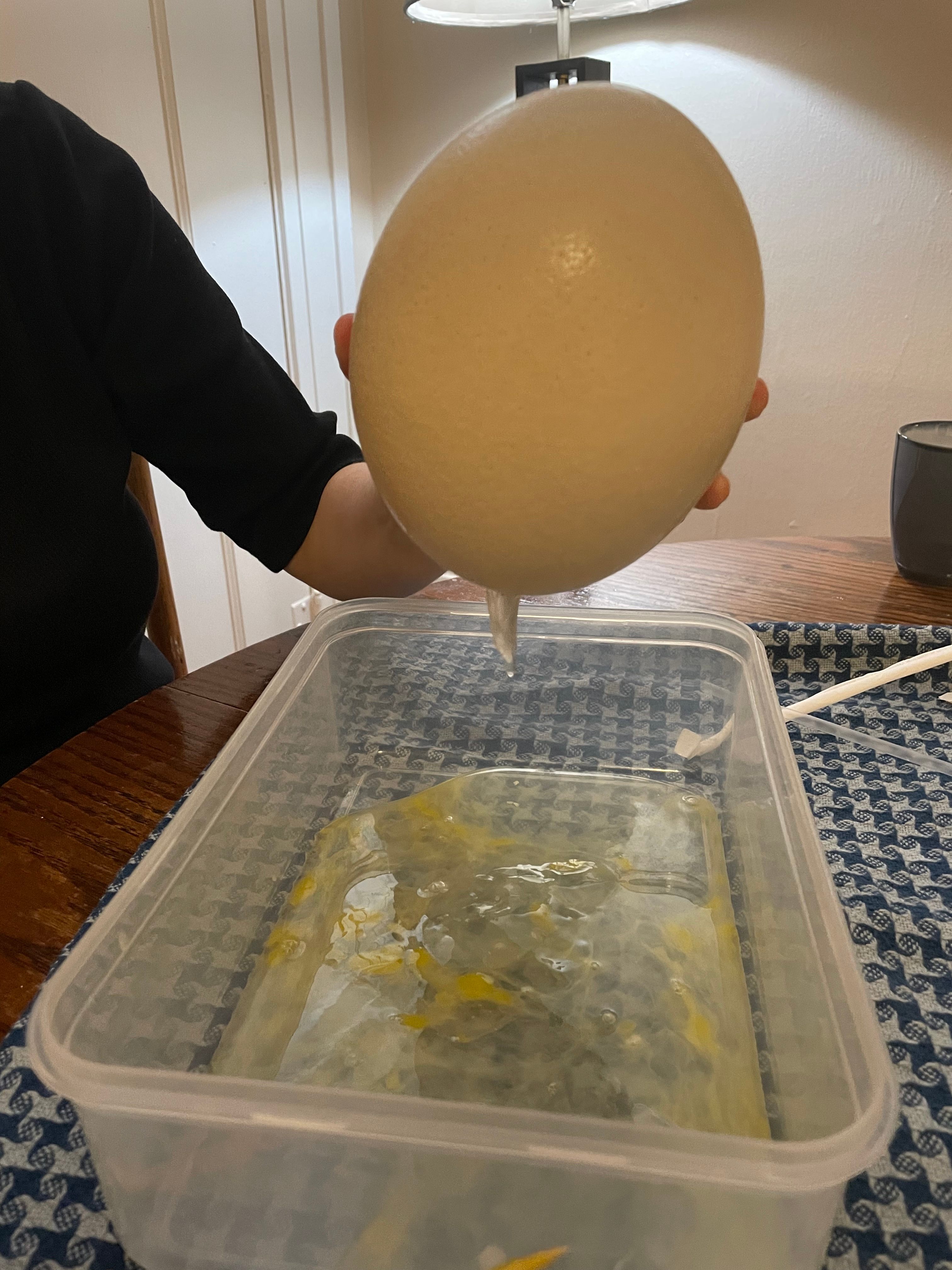
Said omelets were lightly egg-flavored and remarkably fluffy. We all agreed that if we hadn’t known it was ostrich, then they would seem like normal chicken-egg omelets. Ostrich eggs contain more white than the average chicken egg, which likely accounted for the fluffiness. I managed two bites of omelet before handing mine over to Rachel and Tam, who devoured it happily.
I did wonder why so many people found ostrich egg gamy and sulfuric, but perhaps boiling them whole was the reason. It takes a lot of time and heat to fully cook an ostrich egg. In the case of chicken eggs, boiling for too long or at too high a temperature makes the iron in the yolk react with the sulfur and hydrogen in the white, creating smelly hydrogen sulfide. I’m just spitballing here, but since ostrich eggs have high amounts of iron and lots of white, boiling them may not be the way to go.
At the moment, I still have lots of egg to use up. But I’m not worried: I’m hosting a holiday party for my friends. While I may not particularly enjoy just regular egg, I do love making lots of crispy gougères and lemon curd. Friendsgiving? More like Eggsgiving.
Gastro Obscura covers the world’s most wondrous food and drink.
Sign up for our email, delivered twice a week.



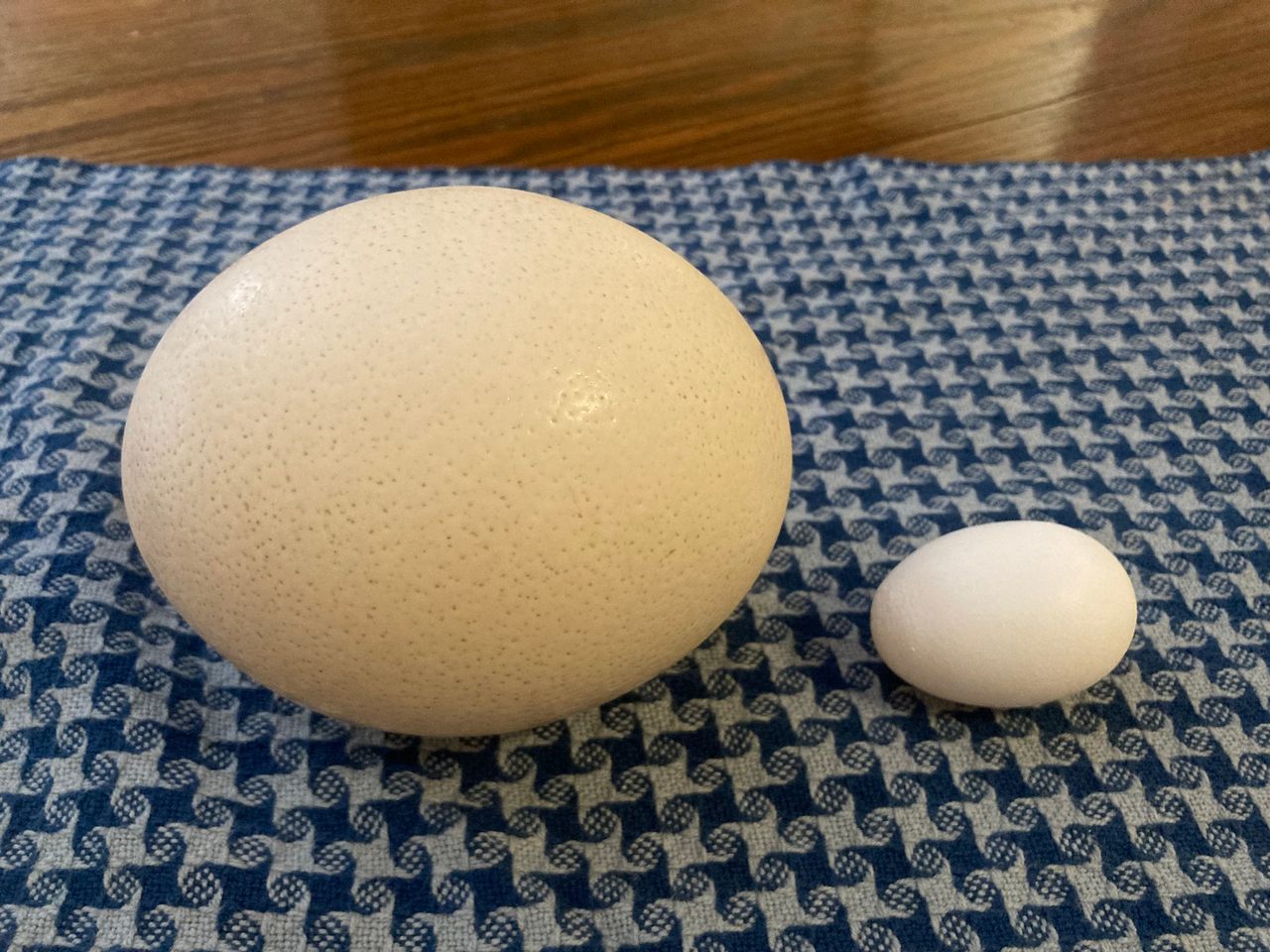





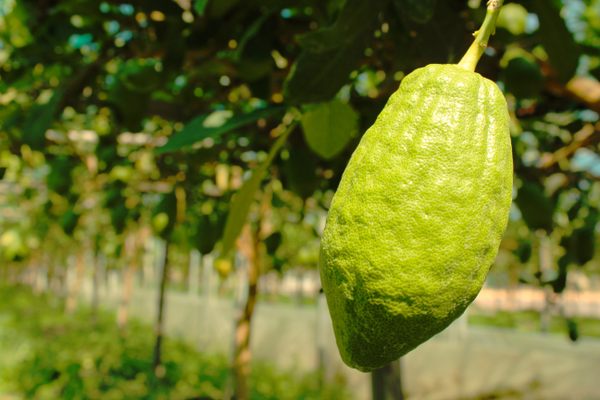

















Follow us on Twitter to get the latest on the world's hidden wonders.
Like us on Facebook to get the latest on the world's hidden wonders.
Follow us on Twitter Like us on Facebook